How to Grow Asparagus |
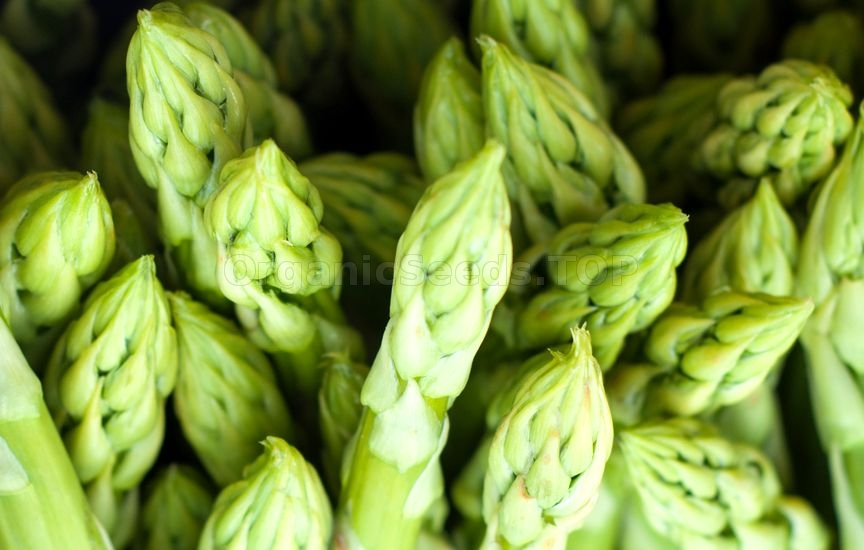 Growing asparagus is not as difficult as you might think; it just takes patience. Asparagus is one of the few perennial vegetables grown in the garden. Since it will be in the same spot for years, you really need to find a spot where it will have all the growing conditions it demands. That usually means amending the soil before hand. Asparagus plants take 3 years to really fill in and mature, but it's worth the wait. Once they start hitting their stride, you will have months worth of asparagus spears every spring. Later in the season the foliage matures into an airy, fern-like cloud which changes to a golden color in the fall. Because asparagus takes up a permanent place in the garden, but can be an attractive plant, many people with space limitations use asparagus as a border or hedge plant. Description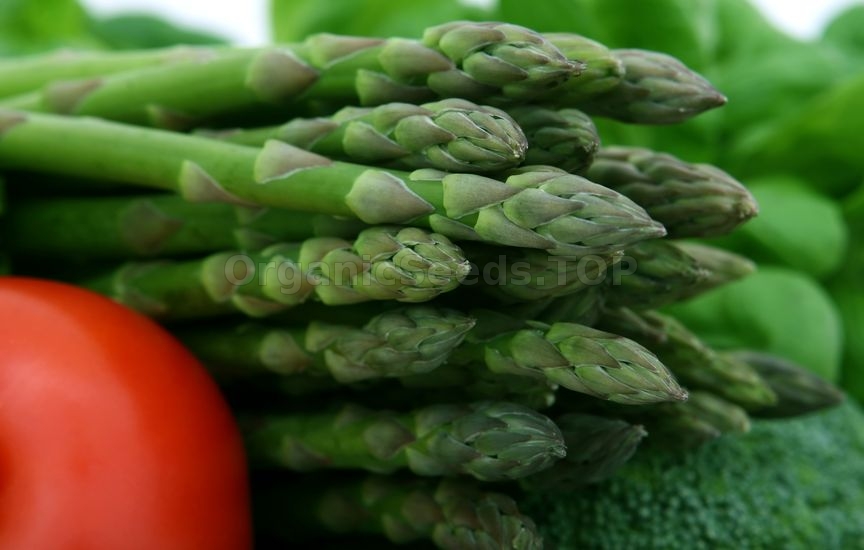 Asparagus spears are straight young shoots with scale-like tips. Although green varieties are most commonly grown, there are also many purple varieties. White asparagus is the same plant as green asparagus, it just hasn't been allowed to see light and photosynthesize. This is accomplished by covering the growing spears with either soil or plastic tunnels tunnels of something like plastic, allowing them to blanch. The final product is smooth, white and virtually fiber free, provided the harvested spears are immediately chilled to prevent the fiber from forming. I have not had the pleasure of tasting white asparagus but I'm told they taste something like a cross between a mild artichoke and palm heart. Because of the labor involved in keeping them blanched, white asparagus is very pricey. In Europe it is a treat looked forward to each spring. There is also purple asparagus. The purple varieties tend to have fewer fibers than their green cousins and to be higher in sugar content. They are grown in the same manner as the green and lose some of their color during cooking. 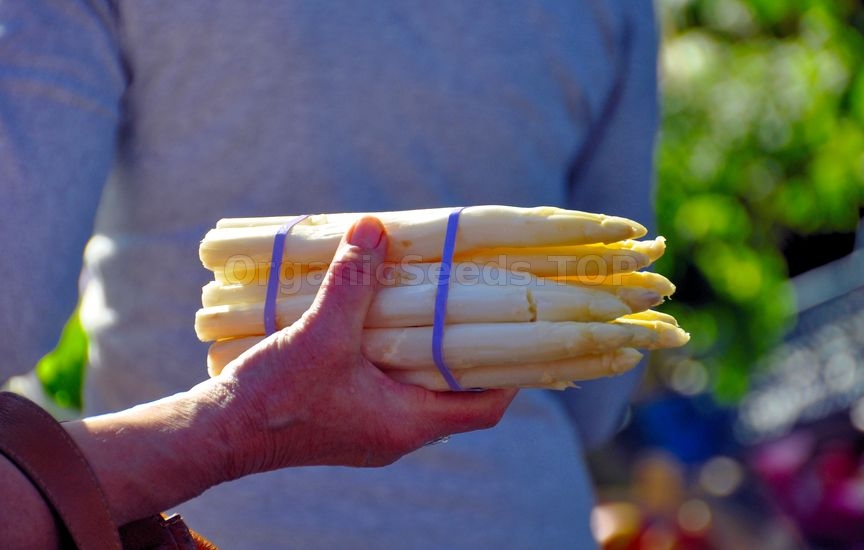 Shoots continue emerging from the soil throughout the spring. After you've been harvesting for a couple of months and the weather starts to warm, the shoots will begin to get spindly. At this point, they are left to grow into the mature ferny foliage, which will feed the roots for next year's crop. Asparagus plants can continue producing for 20 years or more. You can't really begin harvesting your asparagus spears until the 3rd year after they are planted. They need that time to become established and build up their roots. This is especially true the 1st year of planting when the shoots probably won't be very large. You can harvest a few spears in the second year of growth. The plants are not really mature, so let them grow after that initial treat. In the third year, begin harvesting spears that are finger-sized and about 8" long. You can either snap off the spears or cut them with a knife, just below the soil line. If you use a knife, be careful you don't also slice the later shoots that haven't poked through yet. Harvest for about 4 weeks the first year. In subsequent years you can harvest until the weather warms and the spears look spindly. Then allow the foliage to grow and feed the plants. Growing Notes Since you won't be harvesting for the first year or so, asparagus requires some patience and preparation. Since asparagus is a perennial, you'll need to pick an out of the way spot in the vegetable garden, an area you can till around.
Asparagus also needs space, about 4-5 feet for each plant. They won’t spread out much the first couple of years, but once established, they will quickly fill in. Soil For a long-lived perennial like asparagus, it pays to take the time to improve your soil before your plant it. Work in plenty of organic matter and make sure the soil pH is in the neutral 6.0 - 7.0 range. Also get rid of any weeds and large stones in the area, before planting. Planting 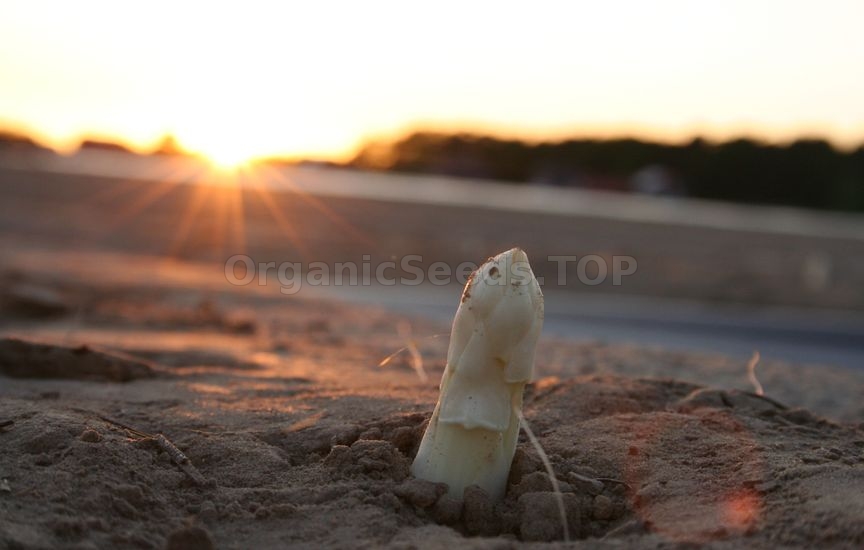 Plants can be started from seed about 4 weeks before the last expected frost. However, seeds will add several years to your wait. Most people find it easier to grow from crowns, which are readily available in the spring. They look like a worn out string mop, but they are very much alive. Unlike many plants, the roots on asparagus crowns can withstand some air exposure and you will usually find them for sale loose. They should still look firm and fresh, not withered or mushy. The most common way to plant asparagus crowns is in a trench. In the spring, dig a trench about 8-10 in. deep and 18-20 inches wide. Work in your compost or other organic matter at this time. To plant the crowns, spread the roots of the crowns out on the bottom of the trench. Space plants about 12-15 inches apart, so they will have room to grow. Cover with a couple of inches of soil and water well. As the plants begin to grow, continue covering them with soil, leaving only a few inches of the shoots exposed above ground. Do this until the trench is full. Maintenance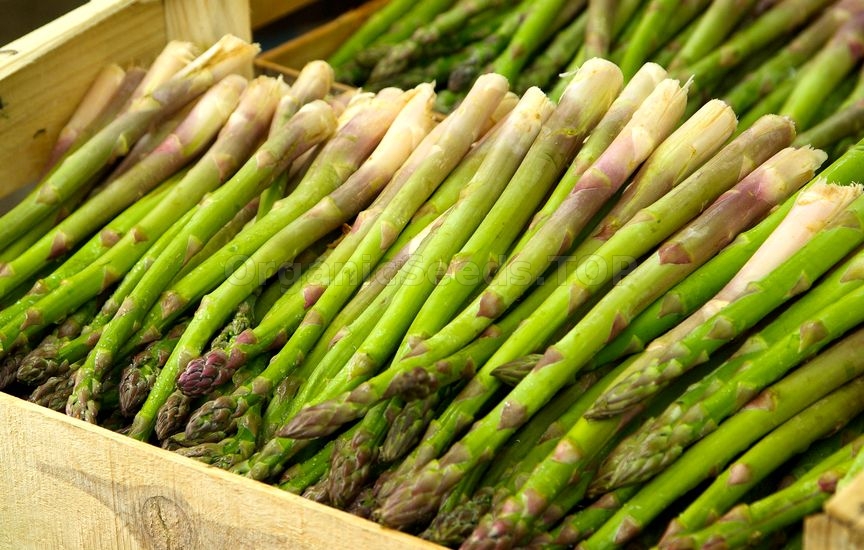 Asparagus need regular watering, especially while young.This is when the plants are gaining strength and becoming established. Give them a good start when you first plant them and you'll have fewer problems in future years. To keep the soil rich and help feed the asparagus plants, top dress the soil annually with compost or mulch. You can do this in early spring, before the shoots appear, or in the fall, after the fronds have died back and been cut to the ground. Asparagus is a heavy feeder and you should also give it a dose of fertilizer in mid-spring when they are actively growing. 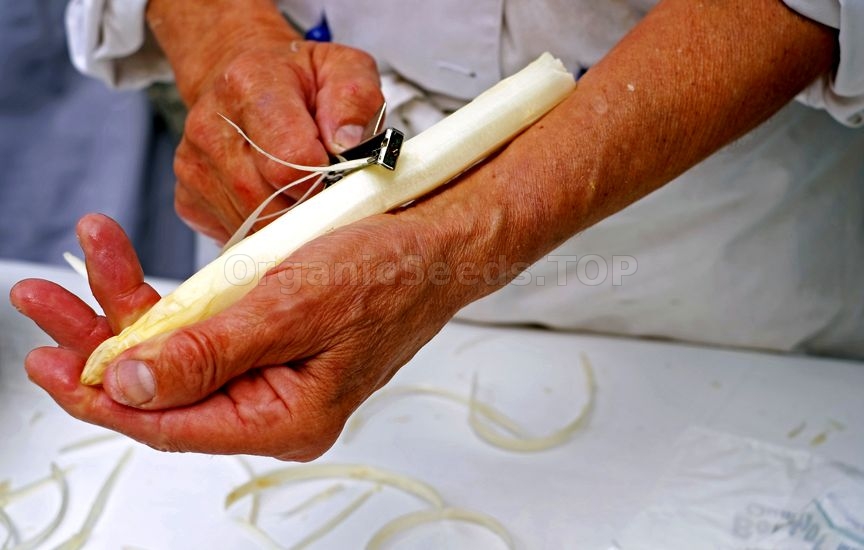 Keep the patch free of competing weeds. A word of caution about weeds - get them while the asparagus plants are young. Asparagus roots form a tightly woven mat, from which no weed can be removed intact. The plants will need to be cut to the ground each year before new growth starts. You can do this in spring, but I prefer the fall. Removing the dead foliage in the fall prevents problems, like asparagus beetles, from over-wintering. However, other gardeners like to leave the foliage as a winter mulch. You may need:«The Argentine» - Organic Asparagus Seeds |
|
|
